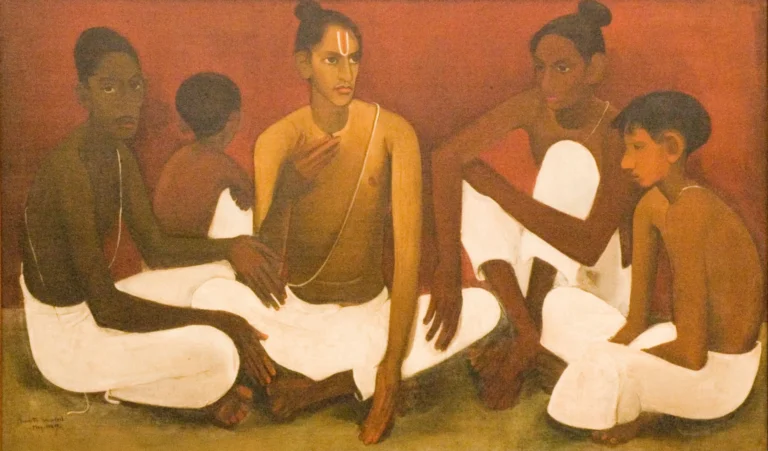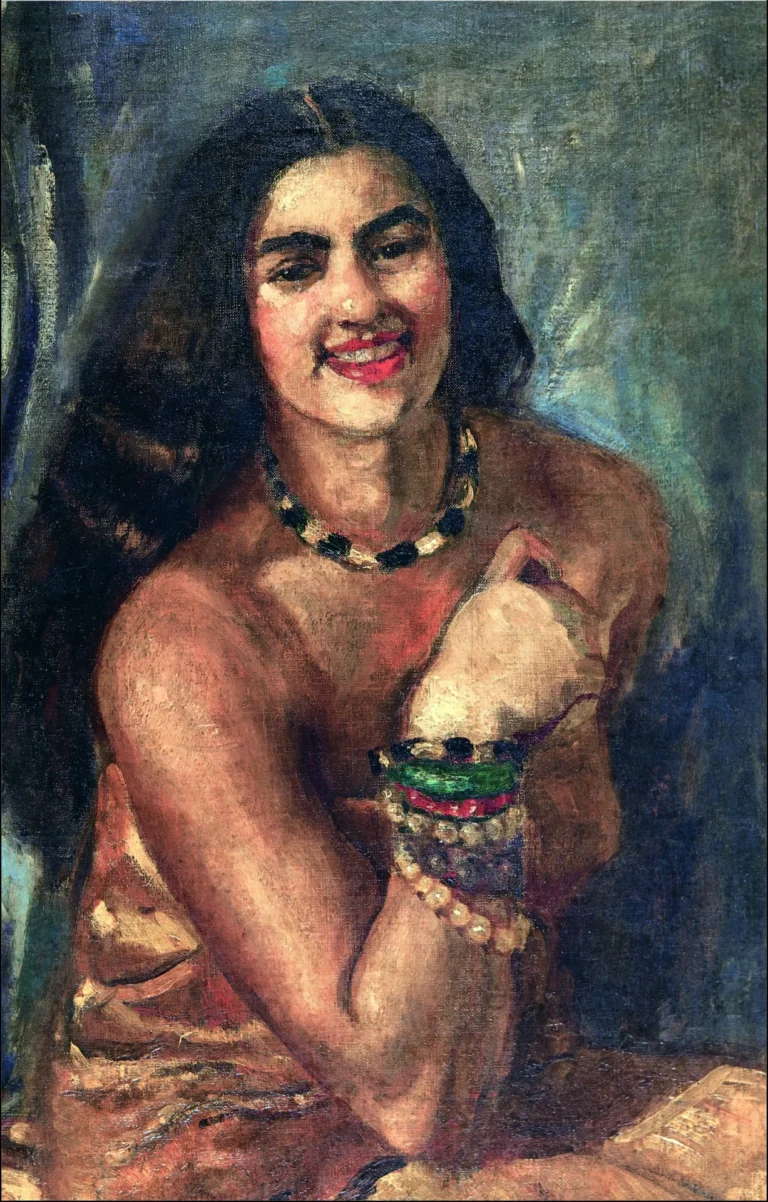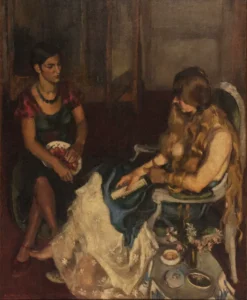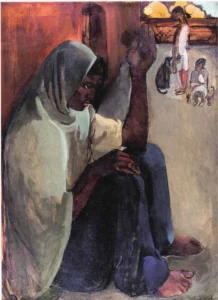Brahmacharis
Brahmacharis is an evocative painting by Amrita Sher-Gil that showcases her deep engagement with Indian culture. Created in 1937 in Shimla, this artwork features three brahmacharis, or celibate practitioners, alongside two children sitting in a serene setting. Measuring 144.5 cm × 86.5 cm, this oil on canvas elegantly merges European and Indian artistic styles. It formed part of her South Indian trilogy and is known for its rich color palette and cultural significance, representing her artistic evolution following her education in Paris.
Year 1937
About the Artwork
In May 1937, amid the tranquil backdrop of Shimla, Amrita Sher-Gil captured the essence of Brahmacharya through Brahmacharis. This period of her life marked a critical exploration of Indian themes, utilising the figure of the brahmachari, symbolizing spiritual discipline and celibacy in Hindu culture. The three brahmacharis and two children in the painting poignantly reflect innocence and reverence for tradition. The work is one of three in her trilogy focused on South Indian life, each painting representing a unique narrative that unveils the nuances of Indian society. The vibrant hues and stylized forms reveal Sher-Gil’s artistic growth, manifesting her ability to express complex cultural interactions while embedding her Western influences.
Did You Know
Liked what you see? Add it to your collection.
Enjoyed reading? Share it.
... continued
Artist and Year
The painting was created by the Hungarian-Indian artist Amrita Sher-Gil in 1937.
Medium and Dimensions
It is an oil on canvas painting, measuring 144.5 cm × 86.5 cm (56.9 in × 34.1 in).
Subject Matter
The painting depicts three brahmacharis (men practicing brahmacharya, a state of celibacy and spiritual discipline in Hinduism) along with two children sitting on the ground. This scene reflects Sher-Gil's interest in Indian culture and traditions.
Part of a Trilogy
Brahmacharis is part of Sher-Gil's South Indian trilogy, which also includes 'Bride's Toilet' and 'South Indian Villagers Going to Market.'
Exhibition and Location
The painting was first displayed at her Lahore exhibition in 1937, where it was priced at ₹1,500. It is now housed at the National Gallery of Modern Art in New Delhi.
Artistic Style and Influence
Sher-Gil's work, including Brahmacharis. shows a blend of European and Indian artistic elements, influenced by her education in Paris and her travels through India. Her palette became characterized by intense reds, ochres, browns, yellows, and greens, reflecting her new visual language after returning to India.










